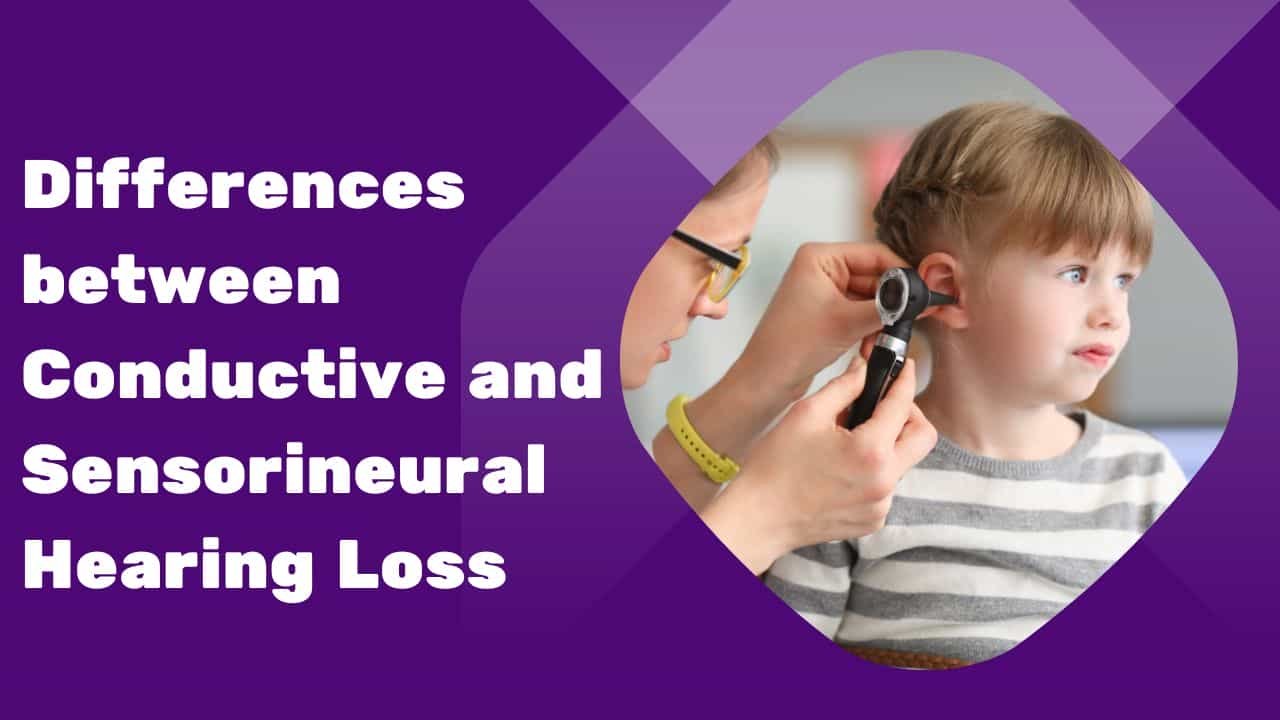To receive and process sounds, the human ear contains a complex array of mechanics. This makes a wide range of sounds audible, including music, talking, the pitter-patter of small feet, pouring rain, crackling fire, and much more. If any of these important ear systems are harmed or deteriorated, it can result in hearing loss..
Research indicates that 16% of adults have hearing troubles, that’s two times as many as the ones who have cancers or diabetes. A person may also experience hearing loss in a single or each ears, with various levels of impairment.
Are you one of those many adults who have one or each ear affected by hearing loss? Learn here about the difference between conductive and sensorineural hearing loss in detail, which are the most frequent types:
Sensorineural Hearing Loss
Damage to the internal ear’s hair cells or, much less regularly, the auditory nerve results in Sensorineural hearing loss (SNHL). It is a permanent condition because if the damage takes place, it can’t be corrected.
Do you know how it is caused? Sensorineural hearing loss is mostly related to age. The additional factors that can result in SNHL include:
- Longer exposure to noise louder than 85 decibels
- Viral illnesses.
- Taking certain medicines
- Autoimmune conditions
- Heart disease and diabetes that affect blood flow.
- Genetic conditions
Also read: Exploring the Best Hearing Aid Brands in India
Conductive Hearing Loss
When sounds are prevented from entering the inner ear, all sounds lose some of their intensity. It then results in a condition called conductive hearing loss (CHL). Something in the middle or outer ear is obstructing the sound before it reaches the inner ear in this kind of hearing loss. Hearing faint noises or understanding speech can be challenging for those who suffer from conductive hearing loss, particularly in noisy settings.
What causes Conductive hearing loss? Anything that obstructs the middle or outer ear can cause CHL. The reasons for the cause include growths, fluid, wax, foreign materials, and inflammation.
- Benign tumors
- Perforated eardrum
- Foreign object in the ear
- Abnormal bone growth
- Impacted earwax
- Eustachian tube function is poor
- Problem in the ear canal, outer ear, or middle ear
- Inflammation in the ear from colds, ear infections and allergies.
What is the Difference between Conductive and Sensorineural Symptoms?
Here’s the difference between conductive and sensorineural hearing loss symptoms:
Symptoms of Sensorineural Hearing Loss
Many times, sensorineural hearing loss occurs so gradually that for years, you can’t notice that. You can recover your clear hearing sooner if you know what symptoms to look for and how to identify the condition early on. Usual symptoms of Sensorineural hearing loss consist of:
- Problem in hearing S, H or F consonant sounds.
- Difficulty in hearing high-pitched sounds or voices
- Lower ability to hear one person in group
- Tinnitus (In ear you feel roaring, ringing or buzzing sound)
- Difficulty hearing conversations in noisy environments
Symptoms of Conductive hearing loss
The origin and severity of conductive hearing loss can impact the symptoms. There are situations when you might feel pain, or the symptoms could be related to other ear conditions. Apart from the noises around you seeming quieter, the other common symptoms of conductive hearing loss include:
- Dizziness or difficulty in balancing
- Ear pain in one or both ears
- Difficulty hearing speech
- Your voice sounds different to you
- Tinnitus (In ear you feel roaring, ringing or buzzing sound)
- Sensation as though your ears are blocked up
- Pressure in one or both ears
Difference Between Sensorineural & Conductive Hearing Loss
Sensorineural hearing loss takes place while the nerve or inner ear is damaged. Conductive hearing loss happens while sound waves can’t reach the internal ear. The main difference between conductive and sensorineural hearing loss is their causes and available remedies.
Options for treating Sensorineural hearing loss could include:
- Assistance with hearing aid
- Cochlear implants
Treatment methods for Conductive hearing loss could include:
- Removing the blockage
- Treating the underlying infection
On the test conducted, the Conductive and Sensorineural hearing loss can be differentiated using the Rinne and Weber tests. The Rinne test contrasts bone conduction with air conduction. The Weber test is used to know about the type and location of hearing loss.
What about Mixed Hearing Losses?
Both the combination of Sensorineural and Conductive hearing loss is Mixed hearing loss. When the ear gets trauma of any kind, mixed hearing loss can arise. When one hearing loss is made worse by means of other, mixed hearing loss can occur step by step.
Someone who has had Conductive hearing loss for a long term may have age-associated hearing loss as they grow old. At the same time, a person with age-associated hearing along with wax impaction may have a transient mixture of hearing loss.
Both Sensorineural and Conductive hearing loss can be due to blast accidents or different styles of trauma. Mixed hearing loss signs could be an aggregate of a number of the above-listed signs and symptoms of two varieties of hearing loss.
Also Read: Early Detection and Support for Children with Hearing Loss
Final Thought
Do you or the one you love have any of the varieties of hearing loss mentioned above? Visit Crystal Hearing Solutions to get first-rate solutions for your hearing impairment. An audiologist from Crystal Hearing Solutions will inspect the cause and give suggestions for a suitable solution that works for you.
At Crystal Hearing Solutions, you can search for various useful hearing aids that fit your various hearing needs. To get the most affordable hearing aid in Mumbai, visit the Crystal Hearing Solutions site.





